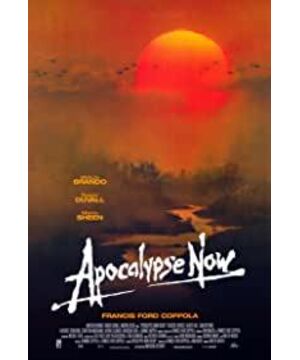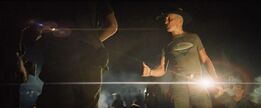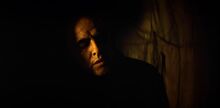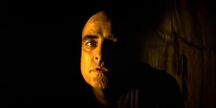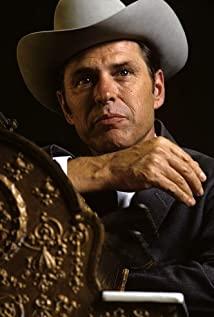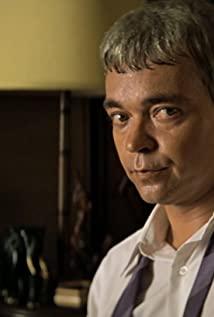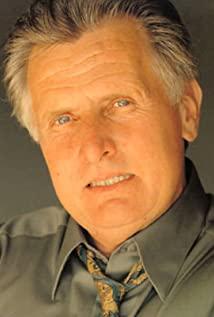Francis Ford Coppola released the 192-minute final version of "Apocalypse Now" in 2000. At this time, it has been nearly a century since Conrad's book "The Heart of Darkness" was officially published in 1902. Unlike what Orson Wells tried to accomplish, "completely faithful to Conrad's script" [3], Coppola's film is "a kind of refraction of the original text" [4], it was Robert Stein Mu's so-called "conversational adaptation", so even if he transplants this deep-dark voyage from the African continent to the battlefield in Vietnam, the audience can still perceive the rewriting and echoing of the original work. "Apocalypse Now" and "Dark Heart" retain the same narrative theme, that is, the protagonist (Marlowe or Willard) travels upstream from modern civilization and returns to the wild. But in the novel, Conrad also nested an unknown narrator "I" in addition to Marlowe: "I", as the receiver of Marlowe's story, faithfully relayed his remarks to readers. The addition of "I" not only changed the location of the story from the Congo River in Africa to the Thames River in Europe, but also dispelled Marlowe's original absolute authority as the second narrator. In this way, the racial discrimination and patriarchal consciousness in his discourse can only represent himself, not Conrad, the author criticized by Achebe [5]. After Marlowe's initial intermittent, stream-of-consciousness narrative, "I" began to recount his experience in large sections, and the novel has since entered the main part. The original idea of "Apocalypse Now" screenwriter Millers was to construct a parallel scene in Washington: Willard sits on a boat on the Potomac River and tells his story to a female reporter. However, Coppola gave up the simple imitation of the structure of the novel, and instead used the illusion brought by the film technology to the viewer to mold the lens itself as "I" [6], through the "I" record of Willard's behavior, The consistency of Willard and Marlowe as the first narrator is retained.
Although the character setting of "Apocalypse Now" is very different from the original book with location and age, there is still a strong counterpoint relationship between the two-most of the characters in the book can find their projections in the movie, and Coppola The small number of characters deleted and added implies his personal interpretation of Conrad's text. First of all, Marlowe and Willard both play the role of narrator. For different reasons, the two travel upstream along an unfamiliar river, approaching Kurtz's frantic heart while recognizing themselves. In contrast to Marlowe's talkativeness is Willard's reticence—sometimes this reticence even appears dull and numb. In addition to the necessary narration, Willard acts more as a substitute for the "eyes" of the audience to watch. This processing stems from the difference in the way of expression in movies and novels. But some obscure similarities between the two have been preserved: Ian Watt pointed out that Marlowe is "an odd image of the Buddha" and he "actively devotes himself to the truth of the secular world. If he is still waiting for enlightenment, he is right Its arrival is not much more optimistic than the protagonist of "Waiting for Godot""[7]; when Willard set out to return to modern society, his confused expression overlapped with the stone-carved Buddha of South Asia and then gradually disappeared into the darkness, emptiness, The atmosphere of anxiety and despair continued to the last minute [1]. Kurtz, the only person to retain the original name, changed his identity from an agent to an American officer. The phrase "Mr. Kurtz—he is dead" was placed at the beginning of the poem "The Hollow Man" by Eliot. Guetti pointed out in "The Wittgenstein of Literature" that Kurtz is an example of the Hollow Man. In the end, they can only make puzzling babbles and can no longer play language games [8]. In "Apocalypse Now", Kurtz directly recites the first verse of the poem, and the end is completed by a war reporter: "This is how this damn world ends/not a sudden end but a whimper." This seems to allude to the ending of the original Kurtz—he was respected by the white society and respected by the indigenous people, but he had only time to leave a whisper of "terrible! Terrible!" in the extreme fear before he died [2]. Coppola rewrote Kurtz's method of death and added more footnotes to the details. His death was completed by Willard. This assassination scene was interlaced with scenes of indigenous people killing cattle and offering sacrifices [1], pointing out that as a brutal perpetrator, he was also a victim of the war. On the other hand, Coppola placed the book "Golden Branch" in Kurtz's room. In the chapter "Killing the King", the author Fraser described the beheading ceremony to end the dictatorship of the King: the tenure of the King. When it is full, the head is cut off, and the person who obtains it is appointed to post [9]. Therefore, while Willard completes the higher-level tasks, he also actually completed the tribe’s Power change-he killed Kurtz and became the new king. This may mean that "Kurtz" will never be truly eliminated, just as the indigenous tribe believed that the soul of the previous god king would be passed on to his successor, the darkness in Kurtz's heart has been silently passed on.
The manager in the original book and the general in the movie are also obvious counterparts, a symbol of the prevailing social norms of the ruling class. Kurtz appreciates their extraordinary ability, but his arbitrariness has been dismissed as "abnormal." But if the so-called normal is to exploit blacks for profit, or treat war as a game, then Willard’s ridicule is right to the point: “Accounting for murder on the battlefield is like issuing a speeding ticket on the Indy 500.” [1], or in the words of Kurtz himself: "When a murderer accuses another murderer, how should this phenomenon be explained?" [2] These colleagues reflect the glory of Kurtz's original idealism: in his misfortune Before being swallowed by darkness, he had directly looked at and resisted the irrationality of this system. In addition, Marlowe's native assistant was dismantled into two Klin and the chief: Klin was hit by a Viet Cong stray bullet; the chief was penetrated by the native spear like the native assistant [1]. It is reasonable for Klin’s death to be placed on the battlefield of the Vietnam War, but the chief’s death is extremely absurd: soldiers with machine guns are helpless against indigenous cold weapons. This second death is meant to reflect what Conrad called " The power of darkness and wildness". It is worth noting that it was the only two blacks on board that died-even though colonial activities have gradually disappeared after a hundred years, racial discrimination has never really disappeared. Female images are also lacking in novels and movies. If Conrad tried to evenly distribute the few women in the colonial activities (Marlowe’s aunt and Kurtz’s fiancee were outside the door to stay away from all disputes, Kurtz’s native lover was in the center of colonial activities). , Two women weaving black wool serve as gatekeepers to colonial activities [10]), then women in "Apocalypse Now" are completely objects of male desire. When they are in the same space with the soldiers, the two parties seem to be engaged in a dialogue, but in essence there is no mutual understanding at all. [1] The absurd atmosphere created by Coppola here reflects the powerlessness of the language in Marlowe's narration in conveying meaning. Pushed to the extreme.
Conrad's environmental descriptions in "Dark Heart", such as "darkness", "wilderness", "jungle" and "river" and other images have strong symbolic meaning, which is also the complexity and infection of his work. The reason for power and beauty. Brantlinger called it Conrad's "Impressionism": "A delicate combination of words that expresses (or conceals) self-contradictory things as a superficially harmonious whole" [11]. When the movie visualizes these words and brings a clear picture, they will inevitably lose the extended meaning behind them. Coppola's strategy is to carry out a lot of blank processing-thick smoke obscures the viewer's sight, becoming a metaphor of a certain crisis; the strong contrast of light and dark echoes the oppressive darkness that seems to have life in the novel. Especially for Kurtz’s close-up shots, one side of Kurtz’s face is illuminated by light, and the other side is completely hidden in the dark, indicating the end of his personality fission under the fierce conflict between the superego and the id[1 ].
"Apocalypse Now" opened with a buzzing sound on the black screen. The audience no longer continued the old "seeing the picture-hearing the corresponding sound" model, but guessed the possible picture from a background sound. The anxiety and disorientation caused by the lack of information continued until the appearance of the following overlay shots. The flying helicopter seemed to provide the source of this buzzing sound, but the ceiling fan that appeared soon afterwards aroused the feeling of confusion again [ 1]. Coppola himself said that this set of shots is "very unrealistic"[12]. They completely deviate from the beginning of the novel, but they have established a mysterious and oppressive atmosphere that resembles it. It is worth mentioning that the soundtrack here is "The End" by The Gate Band. Erasel and Vader pointed out that this song "provides a formally equivalent thing for Conrad stories... The band name (gate) becomes a metaphor, and the music is in this metaphor. Under the environment, through the semantic chain, the film creates a modern concrete atmosphere from the door to the frame, from the beginning to the end (the end), which is opposite to the classical realism reading" [13]. The apocalyptic vision described by Jim Morrison’s babblings appears at the beginning and the end of the film together with the overlapping of Willard and the face of the Buddha[1]. The deliberate loop is to re-emphasize the connotation of "Dark Heart": Willard The upside of the river is just a repeat of Kurtz's journey. Once he reaches the end, he can only face the crisis of his spiritual world.
"Apocalypse Now" is set in Vietnam, colonialism has become history at the end of the 20th century, and the non-humanitarian Vietnam War is a contemporary issue worth focusing on. Sardar believes that “the East is always the yardstick of the other, it is the eternal proof of the superiority of the West, and it will always prove the rationality of the West’s non-Western rule” [14]. Therefore, there is no essential difference between Africa and South Asia. Both are "others" that are very different from Western civilized societies, a black world that Conrad used to establish duality. Even though the time span is more than 80 years, "Apocalypse Now" and "Dark Heart" still share the same basic motif, that is, after the disintegration of the paradise of mankind (the Garden of Eden), "Humanity and its culture are at a higher level," explained by Toynbee. Restoration and pursuit at the level" [15]. The proposition of the "Odyssey" in the Western literary tradition is disassembled into four parts: leaving home, drifting, seeking, and returning home, but Marlowe (or Willard)'s "Odyssey" is unfinished, and their quests are all in nothingness. , In the end, he will never be able to return to the original pure and peaceful phantom of a civilized society.
Annotation [1] Francis Ford Coppola. Apocalypse Now Redux[Z]. Los Angelas: Paramount Video, 2001. [2] Joseph Conrad. Heart of Darkness[M]. London: Penguin Classics, 2007. [3] Orson Welles, Peter Bogdanovich . This is Orson Welles[M]. Boston: Da Capo Press, 1998: 32. [4] Jacob Ross, Yang Xiaolin, Ye Youzhen. Adaptation in the cross mode-the opening of "Heart of Darkness" and the movie "Modern A comparison of the "intelligent compound" scenes in "Apocalypse" (new edition)[J]. Foreign Languages, 2010, 26(01): 9-15. [5] Chinua Achebe. An Image of Africa[J]. The Massachusetts Review, 1977, 18(04): 782-794. [6] Xin Yingyang. The Recreation of Art——From "The Heart of Darkness" to "Apocalypse Now"[J]. Journal of Yichun University, 2014, 36(08): 102 -105. [7] Ian Watt. Conrad in the Nineteenth Century[M]. Berkeley: Univ. of California Press, 1979: 253. [8] John Gibson, Wolfgang Huemer. The Literary Wittgenstein[C]. London and New York : Taylor & Francis Group, 2004: 251-266. [9] James George Fraser. Jin Zhi [M]. Beijing: Popular Literature and Art Publishing House, 1998: 409. [10] Jiang Wenquan. Outsider, Insider, Goalkeeper People——Interpretation of the three groups of female images in "Heart of Darkness"[J]. Overseas English, 2018(09): 156-157.[11] Patrick Brantlinger. "Heart of Darkness": "Anti-Imperialism, Racism, or Impressionism?" [J]. Criticism, 1985, 28(04): 363-385. [12] Francis Coppola. About The self-report of the film "Apocalypse Now"[J]. Film Art Translation Collection, 1980(02): 129-143. [13] Thomas Elsaesser, Michael Wedel. The Hollow Heart of Hollywood: Apocalypse Now and the New Sound Space[C ]. Cambridge: Cambridge University Press, 1997. [14] Zia Uddin Sardar. Orientalism [M]. Changchun: Jilin People’s Publishing House, 2005. [15] Arnold Toynby. Historical Studies [M] . Shanghai: Shanghai People's Publishing House, 2005: 103.Shanghai People's Publishing House, 2005: 103.Shanghai People's Publishing House, 2005: 103.
View more about Apocalypse Now reviews


